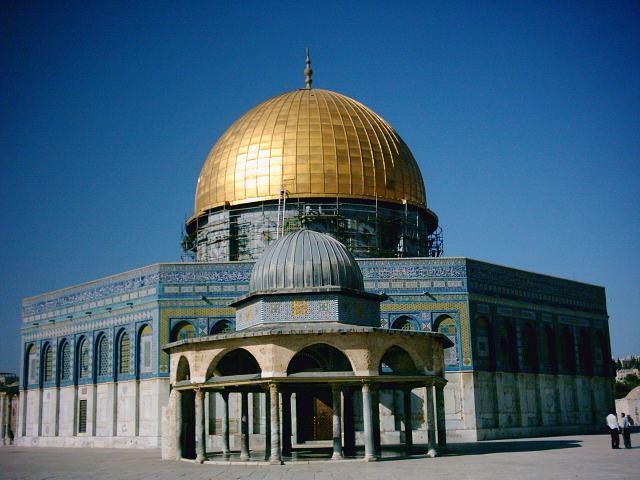 | ||
Fountain of qasim pasha
The Fountain of Qasim Pasha (Arabic: سبيل قاسم باشا) also known as the Fountain of the Bitter Orange (al-Naranj Sabil) is an ablution and drinking fountain located in the western esplanade of the Al-Aqsa Mosque compound in the Old City of Jerusalem. It is situated in front of the Chain Gate.
Contents
History
The fountain was built by Qasim Pasha, the Ottoman governor of Jerusalem in 1527 during the reign of Suleiman the Magnificent, making the first public structure to be built on the Haram al-Sharif/ Al-Aqsa Mosque by the Ottomans. Earlier Ottoman works on the site were not the construction of newer buildings but the restoration of the walls.
A wooden colonnade was added to protect the benches and steps surrounding the Fountain of Qasim Pasha from rain and the summer-time sun in the 1920s restoration by the Supreme Muslim Council. The Dome was rebuilt during the restoration, and covered with lead panels that bestowed upon it a pointed shallower profile. In 1998, the lead sheeting was replaced by a finely crafted stone.
Architecture
The fountain consists of an octagonal building over a cistern, around which is a wooden shelter that protects worshippers from the sun and the rain while performing ablution. There are eight water taps at the fountain, one on each side of the octagon, which are still used for ablution. The fountain structure, enclosing a cistern, is sunk about one meter below the Al-Aqsa Mosque platform. The structure is preceded by a square shallow pool, with marble paving and a modern fountain in its center. The dome of the structure is built atop an octagonal drum.
